Preparing for the Odisha Staff Selection Commission (OSSC) LTR Teacher exam requires a solid understanding of basic arithmetic concepts. Here is a carefully curated list of the top 20 Multiple Choice Questions (MCQs) to help you ace the arithmetic section of the exam.
Top 20 Arithmetic MCQs For OSSC LTR Teacher
- What is the average of the first 50 natural numbers?
(a) 24.5
(b) 25.5
(c) 26.5
(d) 27.5
Ans: (b) 25.5
Solution: Sum of the first 50 natural numbers = 50 * 51 / 2 = 1275. Average = 1275 / 50 = 25.5. - The average of 20 numbers is zero. Of them, at the most, how many may be greater than zero?
(a) 0
(b) 1
(c) 10
(d) 19
Ans: (d) 19
Solution: The sum of all 20 numbers is zero. To keep the average zero, the sum of positive numbers must be equal to the sum of negative numbers. At most 19 numbers can be positive if one number is large enough negative to balance them. - A man spends 80% of his income. If his income increases by 25% and his expenditure increases by 10%, what is the percentage increase in his savings?
(a) 50%
(b) 75%
(c) 100%
(d) 150%Ans: (b) 75%
Solution:
Let the income be 100. Then, expenditure = 80, and savings = 20.
After a 25% increase, income = 125. After a 10% increase in expenditure, expenditure = 88, and savings = 125 – 88 = 37.
Percentage increase in savings = 37−2020×100=75%\frac{37 – 20}/{20} *100 = 75%. - Two numbers are in the ratio 3:5. If 9 is subtracted from each, the ratio becomes 12:23. What are the numbers?
(a) 33, 55
(b) 36, 60
(c) 39, 65
(d) 42, 70Ans: (c) 39, 65
Solution:
Let the numbers be 3x and 5x. After subtracting 9 from each:
\frac{3x – 9}{5x – 9} = \frac{12}/{23}
Cross-multiply and solve for x:
23(3x−9)=12(5x−9)
Solving gives x=13x = 13x=13, so the numbers are 3×13=39and 5*13=65 - A shopkeeper allows a 10% discount on the marked price of an article and still makes a profit of 20%. If the marked price is ₹1000, what is the cost price?
(a) ₹750
(b) ₹800
(c) ₹850
(d) ₹900Ans: (a) ₹750
Solution:
Selling price = 90% of 1000 = ₹900.
Profit = 20%, so Cost Price C.P.=900/1.20=₹750 - A boat can travel with a speed of 13 km/hr in still water. If the speed of the stream is 4 km/hr, find the time taken by the boat to go 68 km downstream.
A. 2 hours
B. 3 hours
C. 4 hours
D. 5 hoursAns: C. 4 hourssolution:Speed downstream = (13 + 4) km/hr = 17 km/hr.
Time taken to travel 68 km downstream = 68/17 hrs = 4 hrs. - The length of the train that takes 8 seconds to pass a pole when it runs at a speed of 36 km/hr is:
A. 60 m
B. 70 m
C. 80 m
D. 90 m
Ans: C. 80 mSolution:
Speed=36 km/h
=36×1000/3600 m/s=10 m/s
Speed=36 km/h= 3600/36×1000 m/s=10 m/s
Length of Train=Speed×Time=10 m/s×8 s=80 m - In one hour, a boat goes 11 km/hr along the stream and 5 km/hr against the stream. The speed of the boat in still water (in km/hr) is:
A. 3 km/hr
B. 5 km/hr
C. 8 km/hr
D. 9 km/hr
Ans: C. 8 km/hr
Solution:
Speed in still water = 1/2x(11 + 5) kmph = 8 kmph. - How many seconds will a train 60 m in length, travelling at the rate of 42 km an hour, take to pass another train 84 m long, proceeding in the same direction at the rate of 30 km an hour?
A. 40 seconds
B. 41.2 seconds
C. 43.2 seconds
D. 4a6 seconds
Ans: C. 43.2 seconds
Solution:
Relative Speed=42 km/h−30 km/h=12 km/h= 12×3600 /1000 m/s
=3.33 m/s
Total Distance=60 m+84 m=144 m
Time= Distance/Speed
= 144 m/3.33 m/s
≈43.24 s - Two trains A and B running at the rates 45 and 36 km an hour respectively, on parallel rails in opposite directions, are observed to pass each other in 8 seconds, and when they are running in the same direction at the same rate as before, a person sitting in the faster train observes that he passes the other in 30 seconds. Find the lengths of the trains.
A. 60 m and 70 m
B. 72 m and 80 m
C. 80 m and 90 m
D. 90 m and 100 m
Ans: D. 90 m and 100 msolution: - Two trains A and B measuring 100 m and 80 m respectively, run on parallel lines of rails. When travelling in opposite directions they are observed to pass each other in 9 seconds, but when they are running in the same direction at the rates as before, the faster train passes the other in 18 seconds. Find the speed of the two trains in km per hour.
A. 40 km/h and 60 km/h
B. 45 km/h and 54 km/h
C. 50 km/h and 70 km/h
D. 60 km/h and 72 km/h
Ans: B. 45 km/h and 54 km/hSolution - A TV was originally priced at $800. It is now being sold at a discount of 20%. What is the discounted price?
A) $640
B) $720
C) $860
D) $960
Ans: A) $640
Solution: Discounted price = Original price — (Discount percentage * Original price). Discounted price = $800 — (20% * $800) = $800 — $160 = $640. - The average of five numbers is 32. If one of the numbers is 45, what is the average of the remaining numbers?
A) 30
B) 34
C) 35
D) 36
Ans: C) 35 Solution: Sum of the five numbers = 32 * 5 = 160. Sum of the remaining four numbers = 160–45 = 115. Average of the remaining numbers = 115 / 4 = 28.75. - The average age of a family of four is 28 years. If the youngest member is 16 years old, what is the average age of the remaining three members?
A) 30
B) 32
C) 34
D) 36
Ans: B) 32
Solution: Sum of the ages of the four family members = 28 * 4 = 112. Sum of the ages of the remaining three members = 112–16 = 96. Average age of the remaining members = 96 / 3 = 32. - If the ratio of apples to oranges in a basket is 3:2 and there are 25 oranges, how many apples are there in the basket?
A) 15
B) 20
C) 30
D) 40
Ans: C) 30
Solution: Since the ratio of apples to oranges is 3:2, for every 3 apples, there are 2 oranges. If there are 25 oranges, then there must be (3/2) * 25 = 37.5 apples. Rounding to the nearest whole number, there are 30 apples. - If the ratio of boys to girls in a classroom is 4:5, and there are 36 boys, how many girls are there in the classroom?
A) 20
B) 25
C) 30
D) 45
Ans: D) 45
Solution: Since the ratio of boys to girls is 4:5, for every 4 boys, there are 5 girls. If there are 36 boys, then there must be (5/4) * 36 = 45 girls. - The ratio of the lengths of two rectangles is 3:4. If the area of the smaller rectangle is 48 square units, what is the area of the larger rectangle?
A) 64 square units
B) 72 square units
C) 96 square units
D) 128 square units
Ans: C) 96 square units
Solution: Let the lengths of the smaller rectangle be 3x and 4x, where x is a positive integer. The area of the smaller rectangle = (3x) * (4x) = 12x² = 48. Solving for x, we get x² = 4, so x = 2. The lengths of the smaller rectangle are 6 units and 8 units. The area of the larger rectangle = (4x) * (3x) = 12x² = 12 * 4 = 48 square units. - If John can complete a job in 8 hours and Sarah can complete the same job in 12 hours, how long will it take them to complete the job together?
A) 3 hours
B) 4 hours
C) 5 hours
D) 6 hours
Ans: A) 3 hours
Solution: John’s work rate = 1 job / 8 hours = 1/8 job per hour. Sarah’s work rate = 1 job / 12 hours = 1/12 job per hour. Their combined work rate = (1/8 + 1/12) job per hour = (3/24 + 2/24) job per hour = 5/24 job per hour. Time taken to complete the job together = 24/5 hours = 4.8 hours. - If it takes 6 workers 8 hours to complete a project, how many hours would it take for 8 workers to complete the same project?
A) 4 hours
B) 6 hours
C) 8 hours
D) 12 hours
Ans: B) 6 hours
Solution: The number of workers and the time taken to complete a job are inversely proportional. Using the formula: (Number of workers) * (Time taken) = Constant. (6 workers) * (8 hours) = (8 workers) * (x hours). Solving for x, we get x = 6 hours. - If a machine can produce 100 units of a product in 5 hours, how many units can it produce in 10 hours?
A) 100 units
B) 150 units
C) 200 units
D) 250 units
Ans: C) 200 units
Solution: The number of units produced and the time taken are directly proportional. Using the formula: (Number of units) = (Rate of production) * (Time). Thus, (Number of units) = (100 units / 5 hours) * (10 hours) = 200 units.










